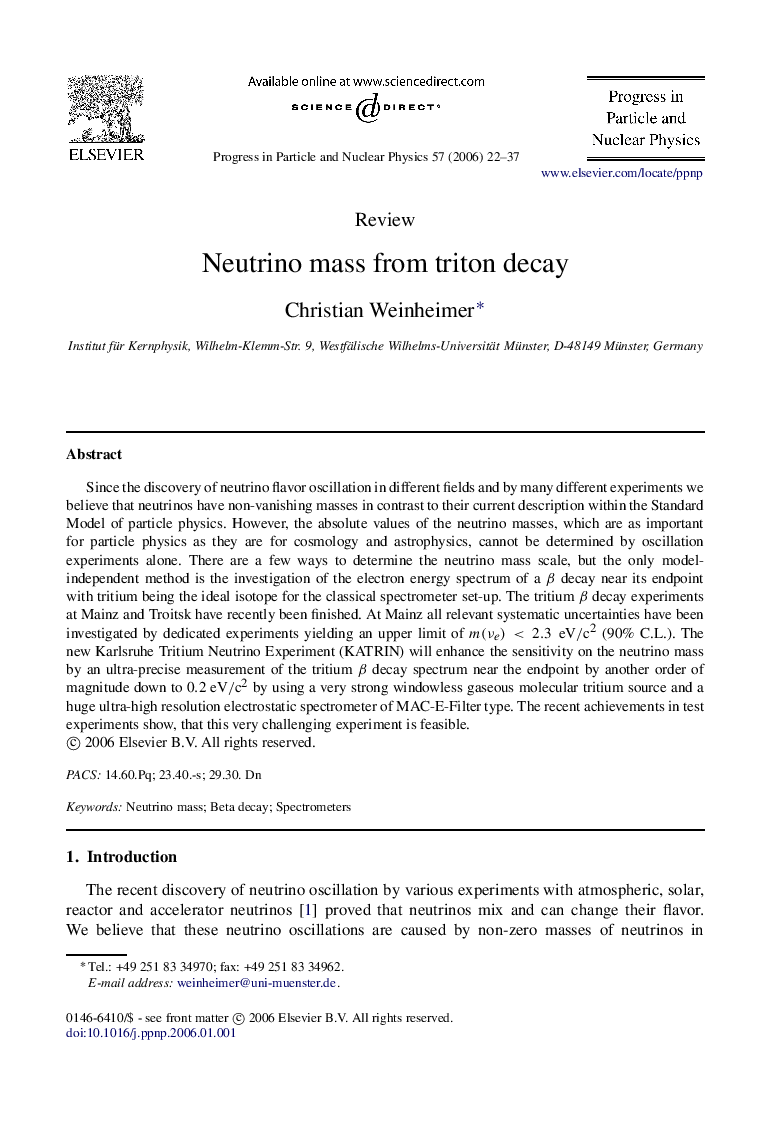| Article ID | Journal | Published Year | Pages | File Type |
|---|---|---|---|---|
| 1854680 | Progress in Particle and Nuclear Physics | 2006 | 16 Pages |
Since the discovery of neutrino flavor oscillation in different fields and by many different experiments we believe that neutrinos have non-vanishing masses in contrast to their current description within the Standard Model of particle physics. However, the absolute values of the neutrino masses, which are as important for particle physics as they are for cosmology and astrophysics, cannot be determined by oscillation experiments alone. There are a few ways to determine the neutrino mass scale, but the only model-independent method is the investigation of the electron energy spectrum of a ββ decay near its endpoint with tritium being the ideal isotope for the classical spectrometer set-up. The tritium ββ decay experiments at Mainz and Troitsk have recently been finished. At Mainz all relevant systematic uncertainties have been investigated by dedicated experiments yielding an upper limit of m(νe)<2.3eV/c2 (90% C.L.). The new Karlsruhe Tritium Neutrino Experiment (KATRIN) will enhance the sensitivity on the neutrino mass by an ultra-precise measurement of the tritium ββ decay spectrum near the endpoint by another order of magnitude down to 0.2 eV/c2 by using a very strong windowless gaseous molecular tritium source and a huge ultra-high resolution electrostatic spectrometer of MAC-E-Filter type. The recent achievements in test experiments show, that this very challenging experiment is feasible.
